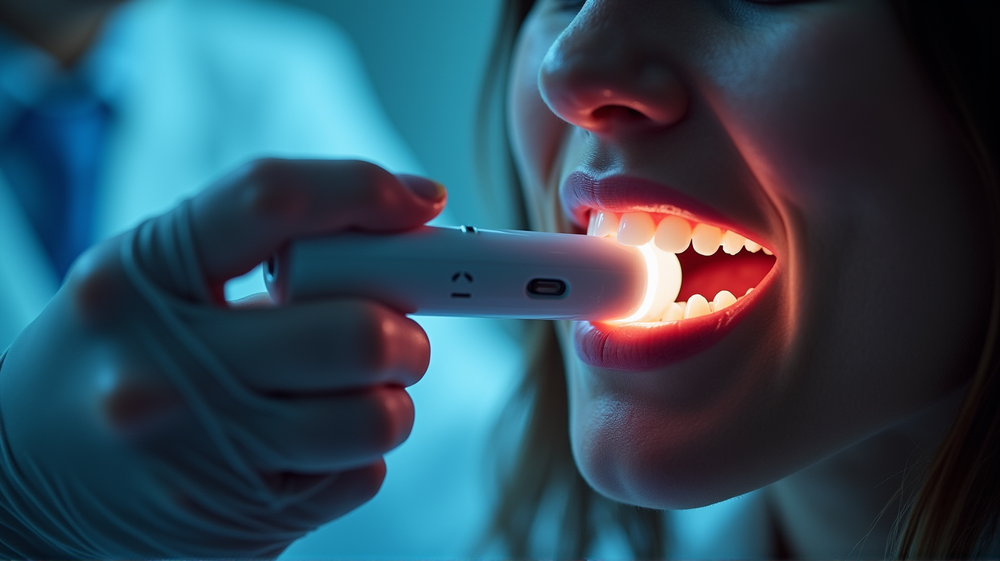Breakthrough Handheld Device Combines Diagnosis and Therapy for Oral Cancer
A revolutionary tool has emerged in the fight against oral cancer, promising to change the landscape of early cancer detection and treatment. This compact intraoral device is a beacon of hope, especially in resource-limited environments where effective healthcare remains a formidable challenge.
Portable Innovation in Cancer Care
The newly developed system integrates optical imaging with photodynamic therapy (PDT) in a single, handheld device that’s even compatible with smartphones. It’s a significant stride forward in healthcare technology, offering early intervention capabilities in places where resources are sparse.
Multifaceted Imaging and Therapy
Central to this device’s function is an intraoral probe that houses light-emitting diodes and optical filters. These components facilitate both white-light and fluorescence imaging. Such imaging capabilities are crucial in identifying lesions that may mark the beginnings of malignancy. For therapy, the device leverages laser diodes to activate protoporphyrin IX (PpIX), a compound effective in destroying cancer cells with minimal damage to adjacent healthy tissues.
Preclinical Successes and Promising Results
During preclinical testing, this tool demonstrated impressive capabilities. It showed a high correlation between PpIX fluorescence and its concentration while proving sensitive to changes during therapy. These findings suggest a means of monitoring dosages during treatment, which could be life-saving for patients receiving care in low-infrastructure environments.
Enhanced Detection through Ratiometric Imaging
To further aid in distinguishing cancerous from noncancerous tissue, the device utilizes ratiometric imaging. By comparing different fluorescence channels, this method enhances specificity and accuracy—a vital requirement in complex tissue environments.
On the Horizon: Clinical Trials and Impact
This remarkable technology awaits trials in human populations, with plans for enhancements to ensure usability and durability. If successful, this device could revolutionize early cancer care in underserved communities worldwide, providing crucial medical support where it is most needed.
According to Technology Networks, this pioneering development stands as a poignant reminder of the transformative power of accessible medical technology, poised to make a global impact by addressing the critical need for early cancer detection and treatment in challenging settings.
Technology Networks’ AI policy can be found here.




